We use cookies
Using our site means you agree to the use of cookies and similar technologies. Read about our policy and how to disable them here
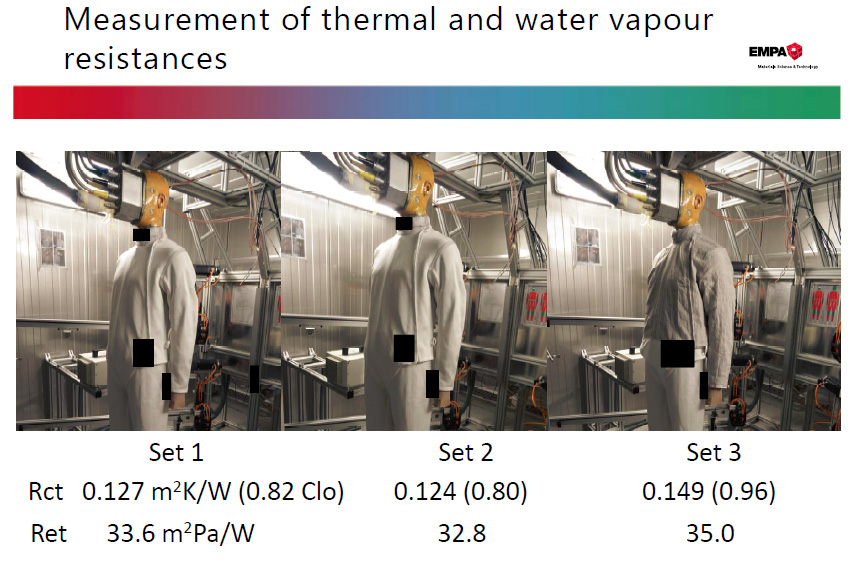 The amazing temperature sensing mannequin from EMPA wearing and testing different fencing uniforms.[/caption]
The mannequin called SAM, is an anatomically-formed mannequin with the body dimensions of an average male adult, has limbs which can be moved and the ability to sweat.
The inner skeleton of SAM, is suspended from a weighing system, it's covered by 26 attached shell parts, each of which is heated separately and has its own surface temperature sensor. In short, it is a very clever piece of equipment. The only problem is that it is expensive, each test is over 1000 Swiss francs, fine for NIKE or other global giants but for Leon Paul comparing product ranges and materials would be too expensive.
[caption id="attachment_540" align="aligncenter" width="840"]
The amazing temperature sensing mannequin from EMPA wearing and testing different fencing uniforms.[/caption]
The mannequin called SAM, is an anatomically-formed mannequin with the body dimensions of an average male adult, has limbs which can be moved and the ability to sweat.
The inner skeleton of SAM, is suspended from a weighing system, it's covered by 26 attached shell parts, each of which is heated separately and has its own surface temperature sensor. In short, it is a very clever piece of equipment. The only problem is that it is expensive, each test is over 1000 Swiss francs, fine for NIKE or other global giants but for Leon Paul comparing product ranges and materials would be too expensive.
[caption id="attachment_540" align="aligncenter" width="840"]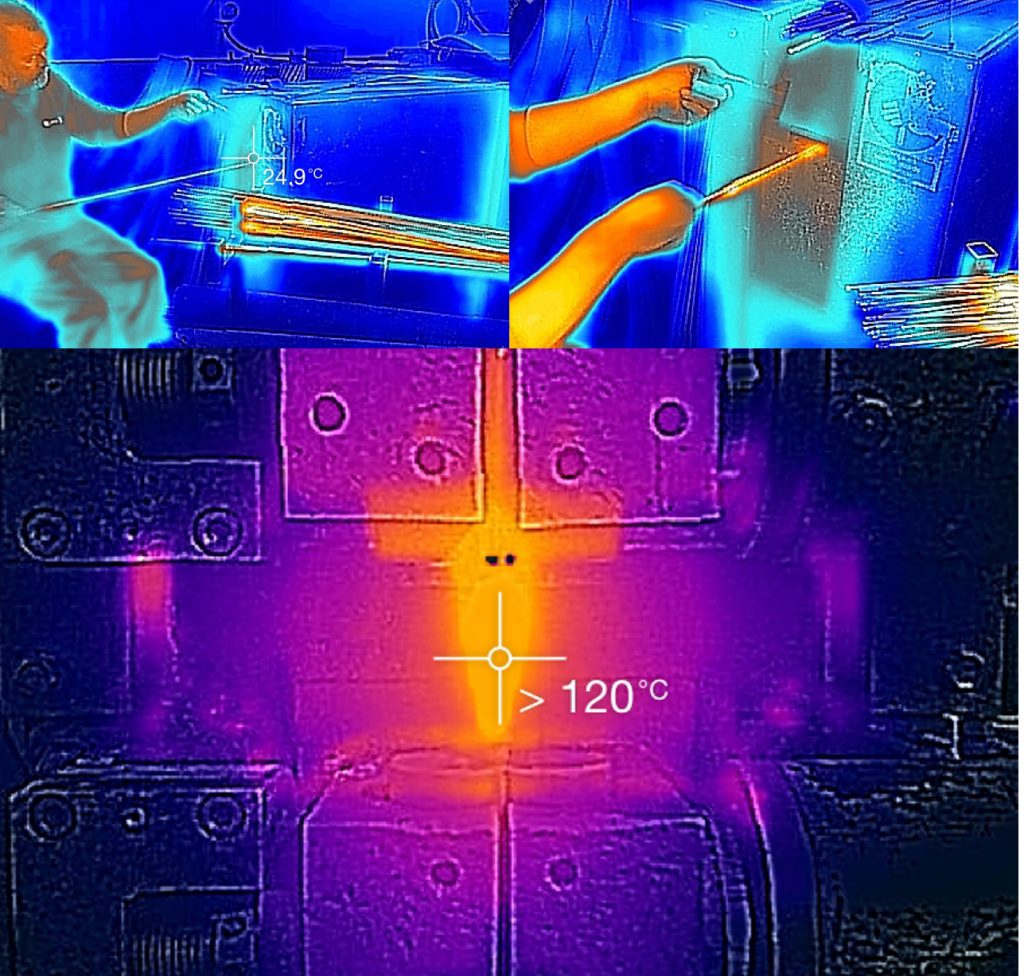 Blades being made filmed with an IR camera[/caption]
Then I remembered in the production of blades we have lots of devices for testing the temperature of metals. The tempering process is key in producing a good springy blade. We have infra-red thermometers, probe thermometers, temperature Data loggers and a thermal imaging camera for seeing where heat is being lost in the ovens.
I wondered if this could be used to see the different temperatures in a fencer, to give us an idea as to what kind of heat dissipation properties different ranges of clothing have.
I asked Owen Jordan, a top UK Epee fencer, to kit up and do some exercise while recording on the camera and you could clearly see the difference in temperature between low exercise and high level exercise as well as between different masks and clothing. After a few different trials to see what series of test could be repeated and how long was needed for each test we reached a standard testing procedure. Over this period Owen had cycled for a combined 80 minutes and he was getting very stiff legs right before a big fencing event. Sorry Owen but it did get you the rather cool nick name “The O’bot” as he smashes through miles like a machine.
[caption id="attachment_544" align="aligncenter" width="750"]
Blades being made filmed with an IR camera[/caption]
Then I remembered in the production of blades we have lots of devices for testing the temperature of metals. The tempering process is key in producing a good springy blade. We have infra-red thermometers, probe thermometers, temperature Data loggers and a thermal imaging camera for seeing where heat is being lost in the ovens.
I wondered if this could be used to see the different temperatures in a fencer, to give us an idea as to what kind of heat dissipation properties different ranges of clothing have.
I asked Owen Jordan, a top UK Epee fencer, to kit up and do some exercise while recording on the camera and you could clearly see the difference in temperature between low exercise and high level exercise as well as between different masks and clothing. After a few different trials to see what series of test could be repeated and how long was needed for each test we reached a standard testing procedure. Over this period Owen had cycled for a combined 80 minutes and he was getting very stiff legs right before a big fencing event. Sorry Owen but it did get you the rather cool nick name “The O’bot” as he smashes through miles like a machine.
[caption id="attachment_544" align="aligncenter" width="750"]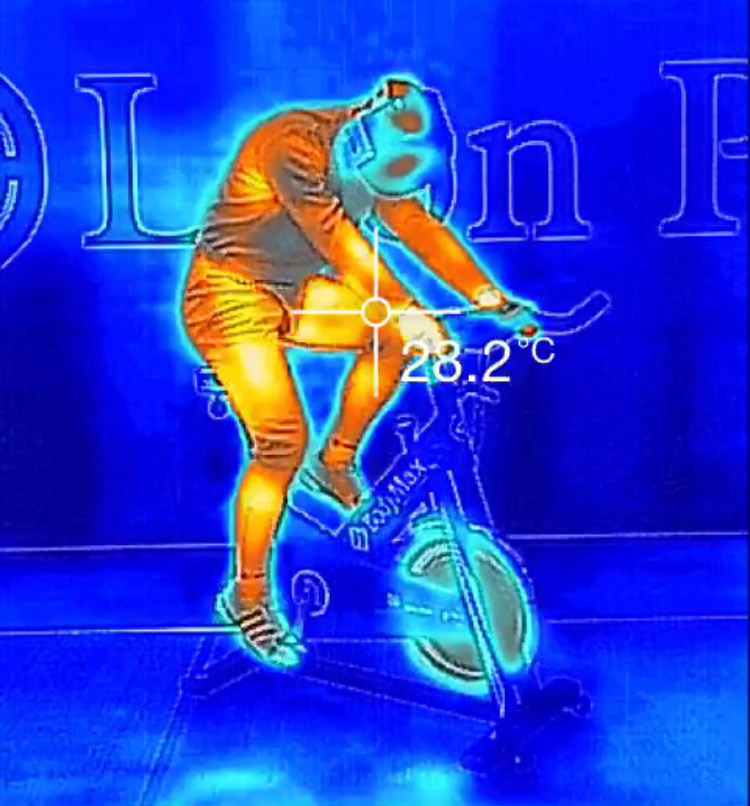 A fencer cycling in uniform filmed with an infrared camera[/caption]
We set the exercise bike in a room where air temperature remains fairly constant as it is right at the center of the Leon Paul headquarters. O’bot would do 5 minutes on the bike then 5 minutes stationary. The measurement for quality was really quite simple, the faster you glowed red, and the faster you turned blue, the better the transfer of heat and the better dissipation thus the better kit for keeping you cool. Obviously if you introduced moving air it would speed up the results but this way we could keep a constant over the course of a few weeks while we did the testing. For some reason I am now compelled to write the rest of this like a science paper from when I was at school with 3 major headings. So without further adieu.
TEST
The Apex range uniform is the lightest we make combined with a lightweight plastron and the X-Change mask with ice padding this should be the coolest combination we make. We compared this to a 350N uniform the Economy range 800 Newton plastron and a traditional style fencing mask.
RESULTS
Watch the video to see the difference.
CLICK HERE FOR VIDEO DIRECT LINK
CONCLUSION
While I am sure that “SAM” would be more accurate this is a good starting point. Maybe the most conclusive proof for me was that while O’bot was doing the test he complained about the heat buildup in the second uniform and said it was hard to finish the test as he was so hot. I will continue to test the equipment and see if we can improve our products and check them against our competitors. O’bot get on your bike!
[caption id="attachment_542" align="aligncenter" width="840"]
A fencer cycling in uniform filmed with an infrared camera[/caption]
We set the exercise bike in a room where air temperature remains fairly constant as it is right at the center of the Leon Paul headquarters. O’bot would do 5 minutes on the bike then 5 minutes stationary. The measurement for quality was really quite simple, the faster you glowed red, and the faster you turned blue, the better the transfer of heat and the better dissipation thus the better kit for keeping you cool. Obviously if you introduced moving air it would speed up the results but this way we could keep a constant over the course of a few weeks while we did the testing. For some reason I am now compelled to write the rest of this like a science paper from when I was at school with 3 major headings. So without further adieu.
TEST
The Apex range uniform is the lightest we make combined with a lightweight plastron and the X-Change mask with ice padding this should be the coolest combination we make. We compared this to a 350N uniform the Economy range 800 Newton plastron and a traditional style fencing mask.
RESULTS
Watch the video to see the difference.
CLICK HERE FOR VIDEO DIRECT LINK
CONCLUSION
While I am sure that “SAM” would be more accurate this is a good starting point. Maybe the most conclusive proof for me was that while O’bot was doing the test he complained about the heat buildup in the second uniform and said it was hard to finish the test as he was so hot. I will continue to test the equipment and see if we can improve our products and check them against our competitors. O’bot get on your bike!
[caption id="attachment_542" align="aligncenter" width="840"]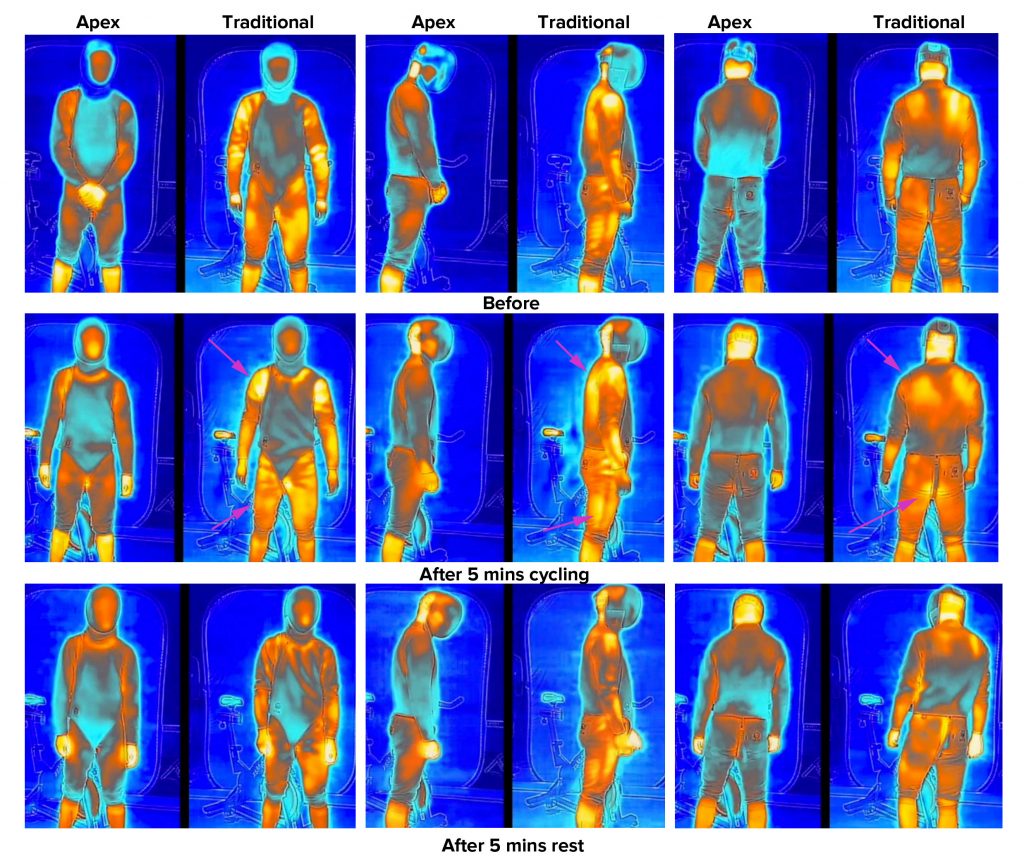 Images taken from the Infrared camera mapping the heat in a fencer while exercising.[/caption]
[caption id="attachment_550" align="aligncenter" width="840"]
Images taken from the Infrared camera mapping the heat in a fencer while exercising.[/caption]
[caption id="attachment_550" align="aligncenter" width="840"]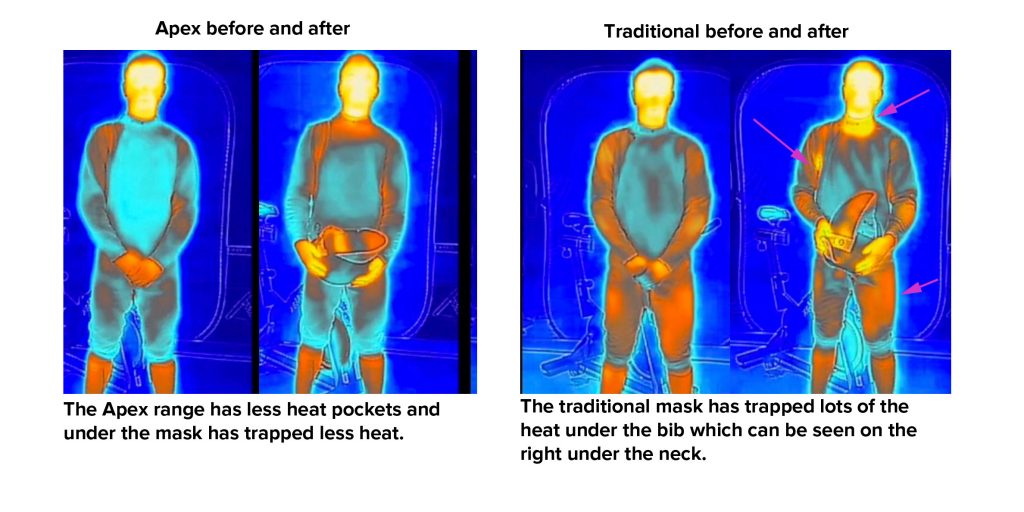 Showing the heat in a fencer before and after exercise.[/caption]
It's worth mentioning that we did actually test our competitors ranges against our comparative own. It would be unprofessional of us to publicly announce the results as there is an inescapable bias involved, but suffice to say that there was only one range that was at the 'Apex' of the performance table.
Showing the heat in a fencer before and after exercise.[/caption]
It's worth mentioning that we did actually test our competitors ranges against our comparative own. It would be unprofessional of us to publicly announce the results as there is an inescapable bias involved, but suffice to say that there was only one range that was at the 'Apex' of the performance table.
